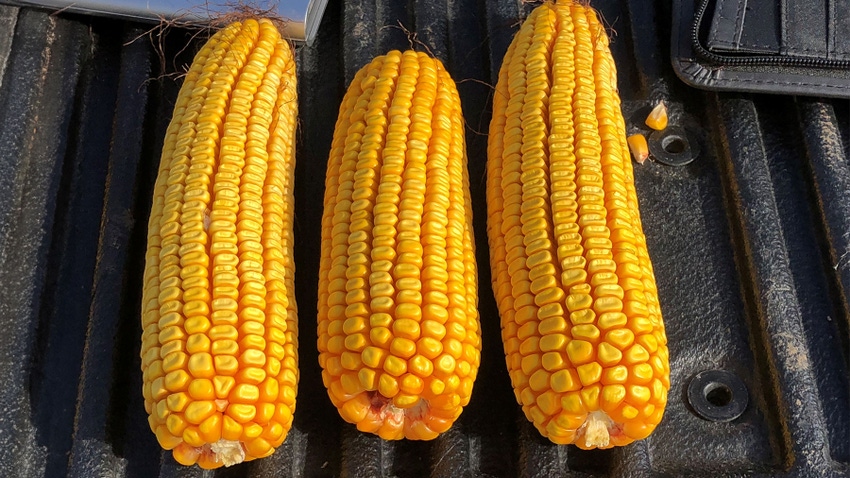
You’ve been cautioned not to judge a book by its cover. Well, don’t judge the value of an ear of corn by its length alone either. Instead, compare ears on weight instead of just looks.
Dave Nanda, director of genetics for Seed Genetics Direct, sponsor of Corn Watch ’23, concentrated on comparing ears from plants that he knew emerged late with ears from plants that emerged together on the first day. In a few cases, late-emerging plants were barren. More often, ears were a reasonable size. When compared to ears from neighboring plants that emerged on time, they were often smaller, but not always.
In the process of making these comparisons, Nanda made another observation. Sometimes ears looked significantly smaller, but when he weighed them, they were much closer to the same size than he expected.
Here's an example. Look at the three ears in the photo. The middle ear looks significantly smaller. This ear was from a late-emerging plant, sandwiched between two plants that emerged on the first day. Is it 10% smaller? 20%? 30%? The scales told a different story. Weights for these three ears were (from left) 0.66, 0.64 and 0.77 pound, respectively. The middle ear was only 3% smaller than the ear on the left, and 17% smaller than the ear on the right, an exceptionally large ear.
Factors influencing ear weight
This example reenforces that you can’t always tell true weight and yield potential of single ears by looking, Nanda explains. Here are three factors that explain why looks can be deceiving:
1. Number of kernel rows. While kernel row number is highly tied to genetics, it can be influenced by environment. Random checks of ears near where these three ears were pulled indicated variation from 16 to 20 rows of kernels. If an ear has more rows of kernels, even though it is shorter with fewer kernels per row, it can regain some yield potential.
2. Number of kernels per row. The largest ear in the photo, the ear on the right, filled the most kernels per row, contributing to its higher weight. Ears with more kernels per row will have higher yield potential, Nanda says.
3. Tip fill and kernel depth. Even ears of the same hybrid within the same row can differ in how well the tip fills, and in how deep and plump kernels are on the ear. Those parameters should be similar for three plants in a row, like the ones shown, Nanda notes. However, things like day of emergence contribute to factors that influence individual plants within a row. They can tassel and pollinate a day or more apart. In a microclimate setting, that can influence the size of individual ears.
Read more about:
EmergenceAbout the Author(s)
You May Also Like




